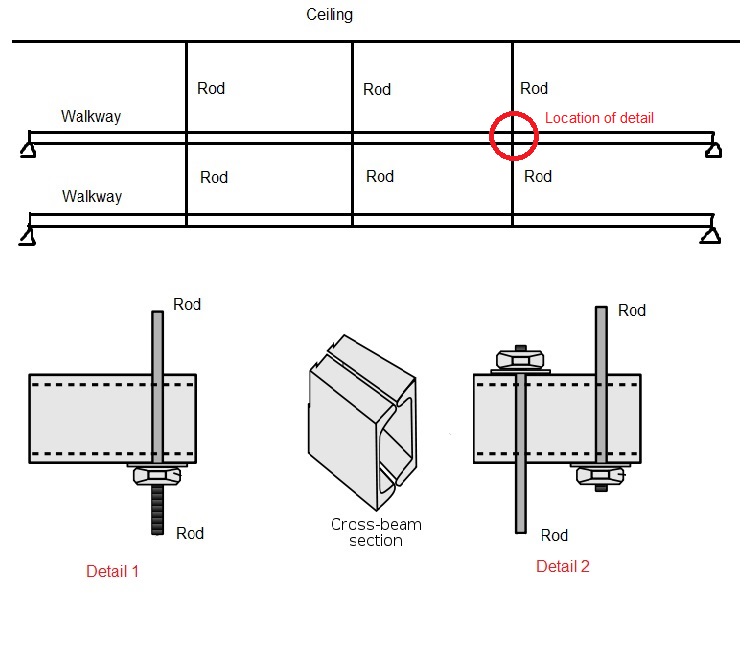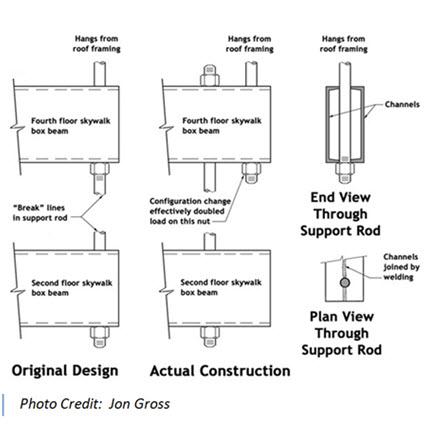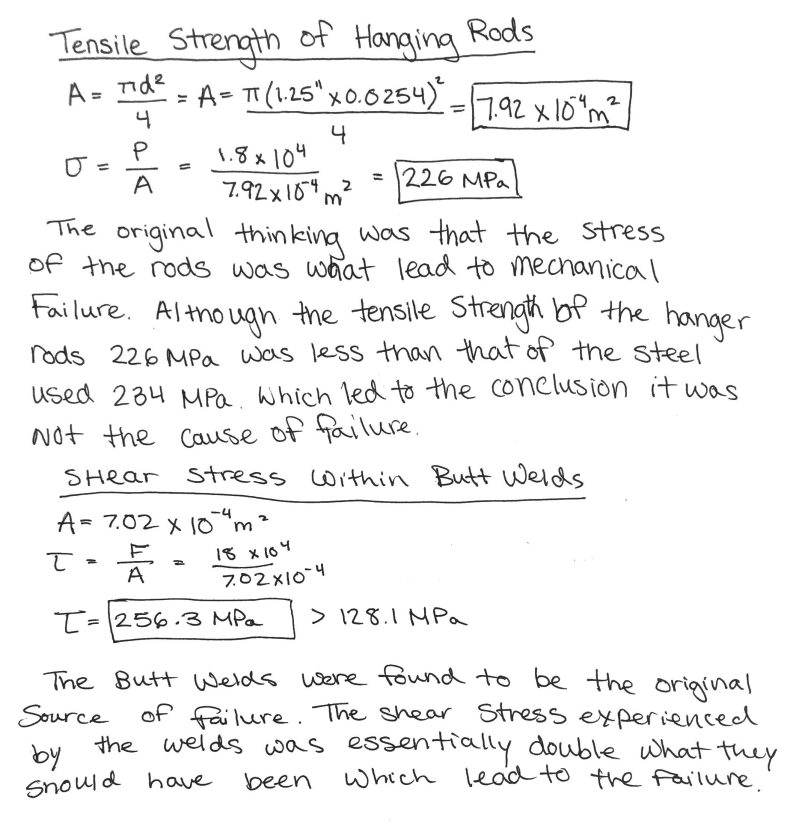My Assignments
Assignment #3a: Engineering Disaster
Hyatt Regency Walkway Collapse (1981)
The Hyatt Regency Walkway Collapse was an engineering failure that occurred in the Hyatt Regency Kansas City Hotel. At the time of the collapse a party was being held in the lobby of the Hotel. The Lobby was one of the defining features of the hotel, it included a multi-story atrium consisting of walkways suspended by support beams and tie-rods. The Hyatt Regency Walkway Collapse was an engineering failure that occurred in the Hyatt Regency Kansas City Hotel. At the time of the collapse a party was being held in the lobby of the Hotel. The Lobby was one of the defining features of the hotel, it included a multi-story atrium consisting of walkways suspended by support beams and tie-rods.
Involved and charged with negligence, incompetence, misconduct and unprofessional conduct was Daniel M. Duncan, Jack D. Gillum and G.C.E International inc. During a thorough investigation done by structural engineer, Wayne G. Lischka, he discovered that the tie rod designs used were the cause of the accident. At some point in the construction of the atrium the original single pin connector design had been replaced by a double pin connector. For the majority of structural components this did not affect the design. However, under further analysis it was determined that this change essentially doubled the load that the fourth floor connectors felt to the beam-hanger rods.
This grossly irresponsible change in design led to 114 deaths and 200 additional injuries as two 32-ton walkways collapsed onto the party below. The magnitude of disaster was enormous. It took multiple days of trying to free survivors, many of the injured suffered amputations and life-long complications from the accident.
Engineering Specifications
"In the original arrangement each hanger rod was to be continuous from the second floor walkway to the hanger rod bracket attached to the atrium roof framing. The design load to be transferred to each hanger rod at the second floor walkway would have been 20.3 kips (90 kN)."
"The hanger rod configuration actually used consisted of two hanger rods: the fourth floor to ceiling hanger rod segment as originally detailed on the second to fourth floor segment which was offset 4 in. (102 mm) inward along the axis of the box beam."
It was found through this detailed analysis of failure that even if the change in hanger rods was not made the ultimate capacity of the connection would have been far short of the Kansas City Building Code safety factor of 1.67 times 20.3 kips (151kN). Based on the test results the average ultimate capacity of a single-rod connection was approximately 20.5kips (91kN). Thus the ultimate capacity actually available within the original design would have been 60% of the AISC Specifications. As we can see, the parties involved ultimately cut corners by avoiding a call for reanalysis following the primary collapse of the roof, just weeks prior to the walkway collapse. They did this to save time and money, and paid for it with the lives of 114 innocent people.
FBD from post-failure analysis(wikimedia)


explanation of rod analaysis


personal equation analysis


Lessons Learned
- One lesson learned is that you should never cut corners while designing a safe structure or component. Cutting corners leads to mistakes that can destroy the lives of people using your design.
- Another lesson would be that analysis of structures is key to designing a safe product. Expediting the construction and design process can have adverse effects on a product's performance. It's always better to have multiple minds working to achieve a goal to ensure that work is checked thoroughly.
- Personally this is very scary to me. It outlines the importance of being knowledgeable in your field. If you do not know your stuff it can lead to exceptionally horrible results.
- The Hyatt Regency walkway collapse has resulted in a nationwide re-examination of building codes. It also raised questions on whether those found responsible for such atrocious engineering mistakes should be held accountable to greater lengths to ensure their negligence is not reproduced.
Resources
- https://www.thinkreliability.com/case_studies/root-cause-analysis-of-the-hyatt-regency-disaster-cautionary-tale-about-assumptions/
- https://www.engineering.com/Library/ArticlesPage/tabid/85/articleType/ArticleView/ArticleID/175/PageID/199/Default.aspx
- https://interestingengineering.com/understanding-hyatt-regency-walkway-collapse